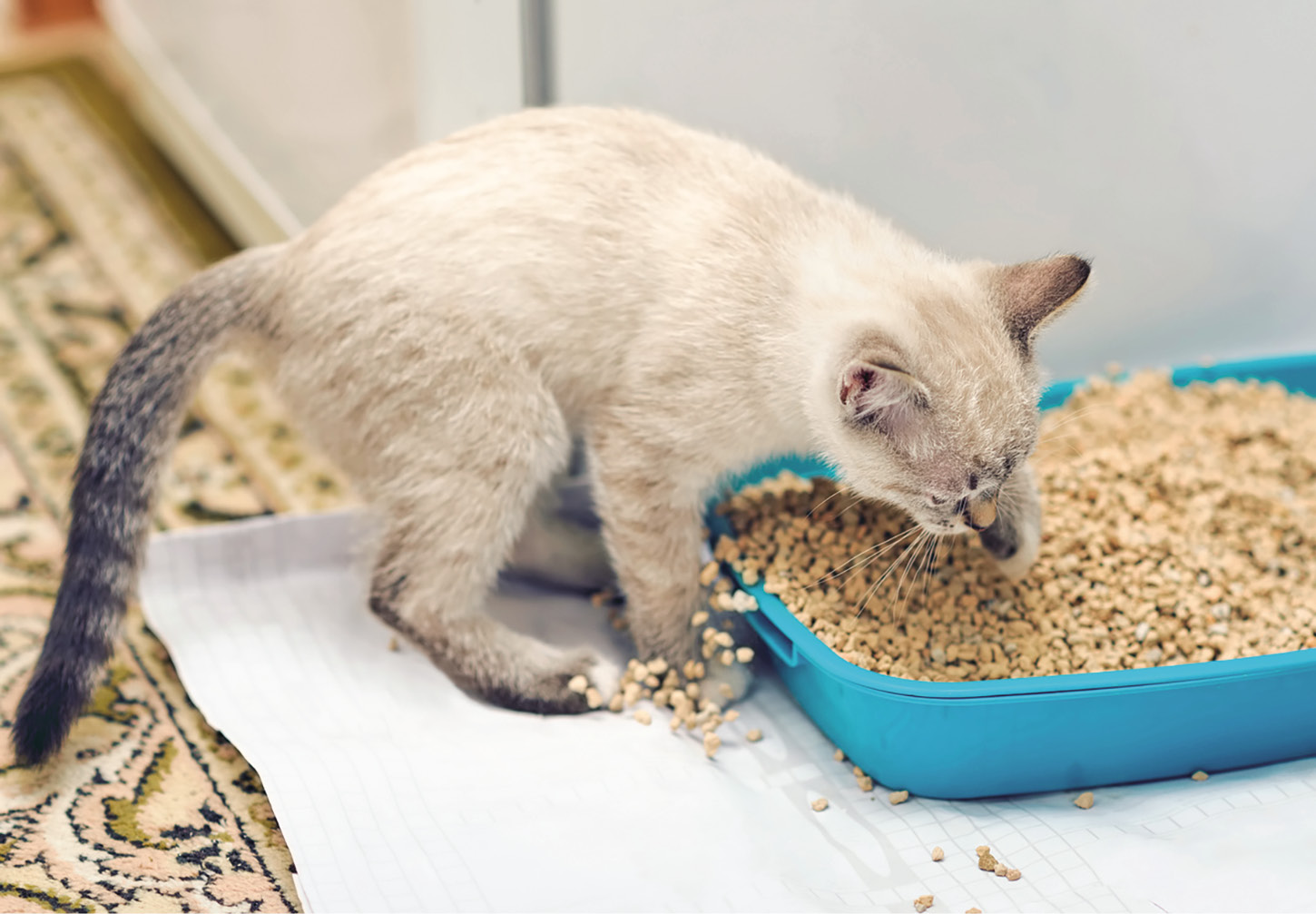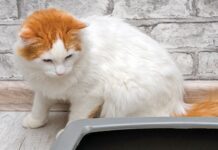Cat litter belongs in the litterbox, not scattered across the floor of your house. While it is impossible to eliminate all litter tracking, you can minimize the amount of litter that gets stuck on your cat’s paws.
1. Choose your litter wisely. The type of cat litter you use can impact how much it gets tracked through your house. In general, litter with larger, smooth particles will track less than litter with small, rough particles that can easily grab onto hair. Low-dust litter may help reduce mess. Each time your cat digs to bury his waste, that dust will get kicked into the air around the litterbox, and it will cling to his hair and paws. Pellet litters tend to track less than litters with a sandier texture.
But, before you get too excited about switching litters, remember that the most important thing about choosing a cat litter is that your cat likes it. A low-tracking litter is all well and good, but if your cat hates the way that brand feels or smells, he’s just going to poop behind the couch instead. Making these transitions slowly, gradually mixing in greater proportions of the new litter over time, is the best way to make the change.
2. Get a big litterbox. Having a large litterbox gives your cat space to dig around and  hide the evidence. This helps to prevent spilling when your cat kicks.
hide the evidence. This helps to prevent spilling when your cat kicks.
3. Consider a covered box or one with tall sides. For enthusiastic kickers, a box that has tall sides or is covered to contain litter can help. Not all cats like covered litterboxes, though, and senior cats may have trouble getting in and out of a tall box. Choosing a box with a bit of a lip along the inside edge can also help to keep litter in the box where it belongs.
4. Lay a towel or mat under and around the litterbox. For the litter that does make it out of the box on the kitty paw express, you need a way to quickly get it off your cat’s paws before it gets too far. A simple towel can work wonders. Arrange one or more towels or mats under and around the litterbox so that no matter which way your cat steps out, his paws will come in contact with the towel to rub off litter. You can shake the litter back into the box or into the trash every few days. Don’t forget to change out and wash the towel or mat on a regular basis.
5. Consider a litter trap. If you want a higher-tech method of litter apprehension, there are a wide variety of litter trapper mats on the market to fit every style and budget. These mats are generally designed with two layers: a porous upper layer that the litter falls through when your cat steps on it and then a solid layer that catches the litter. You will still need to ensure that your cat will step on the litter trap when exiting the box, and you may need multiple mats. Plus, of course, your cat may just say no to the litter trap.
6. Scoop often. By keeping your cat’s litter box clean, you make it easier for him to quickly bury new deposits. Less digging means less potential for mess. Also, urine-soaked litter can get sticky and may be more likely to cling to his paws if he steps on it by accident.
7. Trim paw hair. Medium and longhaired cats are more likely to track litter than their shorthaired counterparts. These fluffy felines often have tufts of hair between their toes and on the undersides of their feet. While these “slippers” can be adorable, they are also prone to catching litter and tracking it through your house.
To trim the hair on your cat’s feet, use good grooming or hairdresser’s shears designed to cut hair. Rounded tips are a plus for extra safety. Always cut with the blades parallel to your cat’s paw to reduce the risk of pinching or cutting his skin. Simply cut the hair on the bottom of the paw so that the ends of the hairs are flush with his paw pads.
Some cats may tolerate using electric clippers to shave the hair on their paws, but you will need to take some time to get your cat used to the sound and feel of the clippers first.




